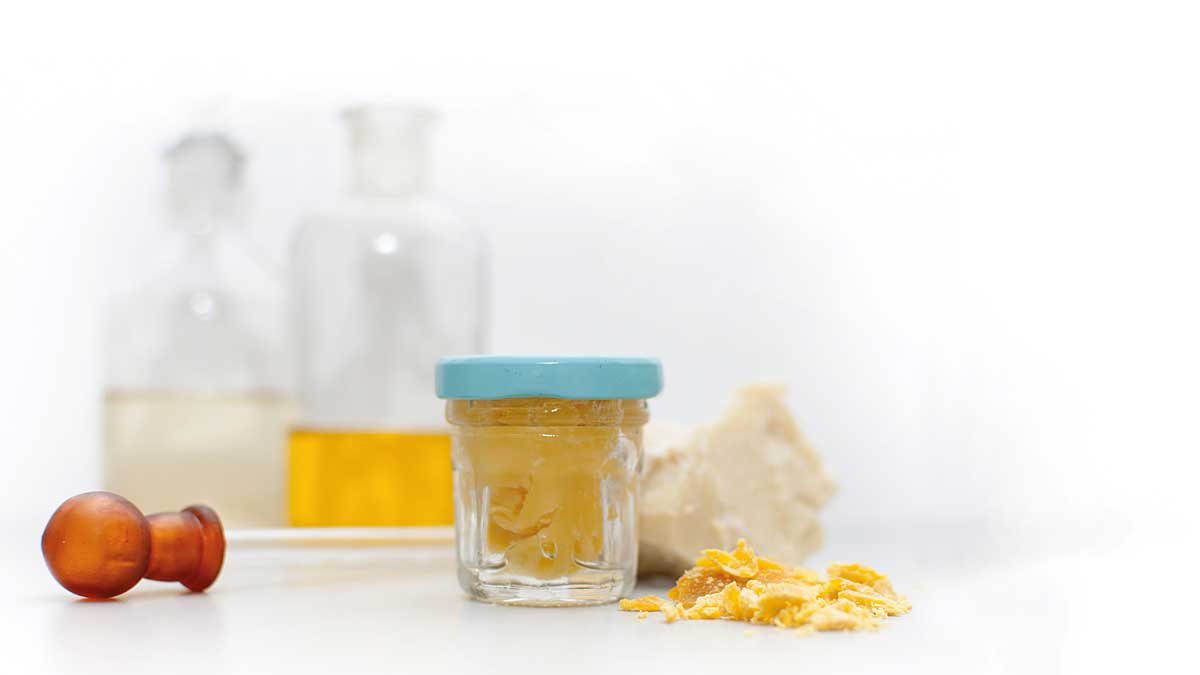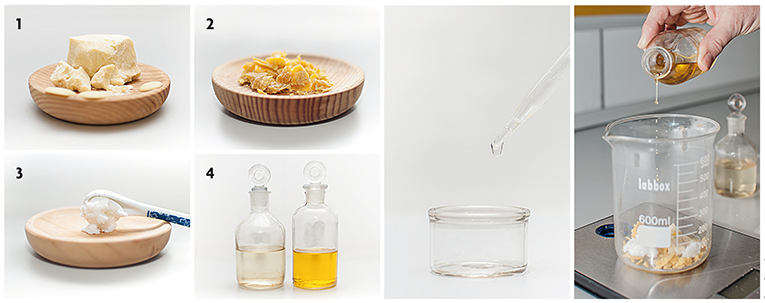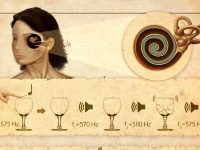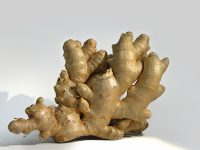
Easy, simple and fast, a proposal for an appealing and convenient activity after a very cold winter in which we have not stopped looking for a remedy for chapped lips. Our lips are one of the parts of our body that suffer most when exposed to different outdoor temperatures. As a result they get sore and flaky. Like plant leaves, lips need to fight the cold, and the best remedy is to cover them with an insulator. There are natural insulators in living beings: fat and wax. For plants the solution is found in the outer layer of leaves: cutin, a waterproof substance found in leave cuticles and fruits. The function of this huge lipid molecule is protection, a strategy of land plants to prevent drying, which also acts as a barrier against fungi and bacteria. Shea butter, cocoa butter and beeswax and almond oil, are often used in the preparation of moisturizing creams or ointments because of its properties.
«Wax and oil are the best waterproof compounds, and with these ingredients we have prepared a very simple and quick to make lip balm»
Wax and oil are the best waterproof compounds, and with these ingredients we have prepared a very simple and quick to make lip balm. We also added oil extracted from a plant known and used by man since ancient times. We are talking about safflower oil, extracted from Carthamus tinctorius, also known as catharmine, which, like thistles, daisies or sunflowers, belongs to the plant family Asteraceae. Today it is not used as much as before, but remains of these plants have been found in ancient Egypt sites, in the tombs of pharaohs like Tutankhamen as well as in cloths dyed with this plant. Described by Linnaeus in 1753 in his book Species Plantarum, he named it deriving the Arabic word khartoum, which means «dye». Furthermore, in the nineteenth century the plant came to be known as carthamin, which is the natural red pigment derived from safflower.
Safflower is currently grown for the extraction of oil from its seeds, and the greatest producers of this plant are Mexico and India. The oil extracted is used to elaborate vegetable margarines, but it can also be used as salad dressing. It is similar to sunflower oil, and also has properties that make it suitable to remove skin flakes that appear on lips that are dehydrated by the cold. That is why we have included it in the preparation of this lip balm.

For lip balm preparation we need: (1) cocoa butter, (2) beeswax, (3) shea butter, (4) almond oil and safflower oil. Optionally, we can add a few drops of essential oil and vitamin E. / Photo: Pepa Granados
ACTIVITY: PREPARE LIP BALM
Materials
- Scale
- Microwavable Glass Container
- Wooden Spoon
- Glass pot (you can reuse one) or empty lip bar container
Ingredients
- 12 g of shea butter
- 6 g of Beeswax
- 6 g of cocoa butter
- 4 g of safflower oil
- 2 g of almond oil
- 2 drops of essential oil (optional)
- 2 drops of liquid vitamin E (optional)
Preparation
Put in a scale a microwave-safe bowl and add tare. Once the scale reads zero start adding different ingredients, making sure about weight. This is why we use grams, to make the addition of liquids easier. Add all ingredients except essential oil and vitamin E.
When all ingredients are inside the container put it in the microwave. As there are so many different models of this appliance, we recommend starting with medium temperatures and short periods, and watch and stir with a wooden spoon until obtaining a semisolid and creamy mixture.
Once the mixture is dissolved, optionally add the essential oil and vitamin E. The former adds flavour and the latter is a preservative. This preservative can be used in the preparation of any other ointments.
Then, pour the mixture into another pot and leave in the fridge until solid. We can also fill an empty lipstick container or any other container to facilitate the use of this balm. Since this preparation is very simple, it is best to prepare a small amount, repeat it when necessary … and let your lips shine!
Mª José Carrau, Pepa Rey i Olga Ibáñez. Teaching Team of the Botanical Garden of the University of Valencia
© Mètode 85, 2015.
Watch this actvity on Mètode TV.





